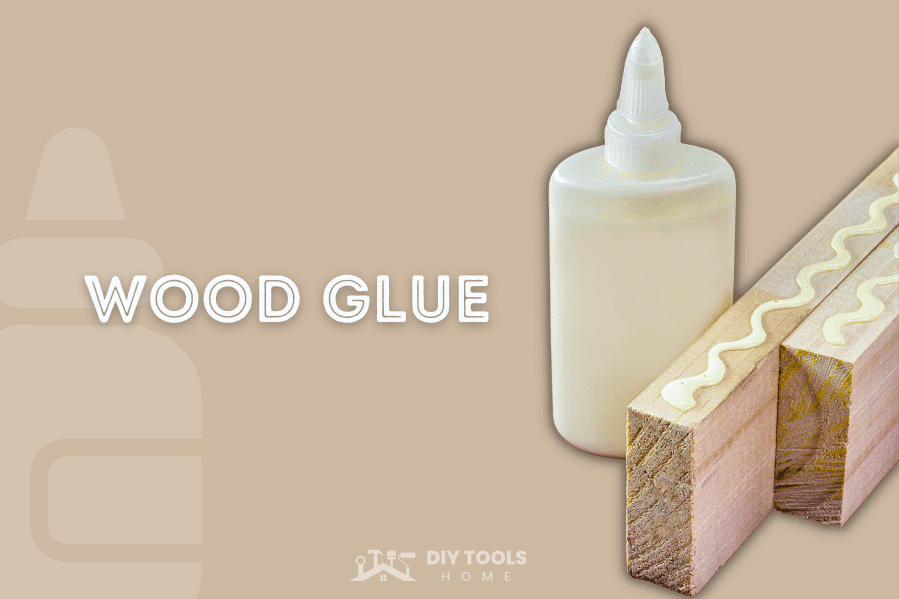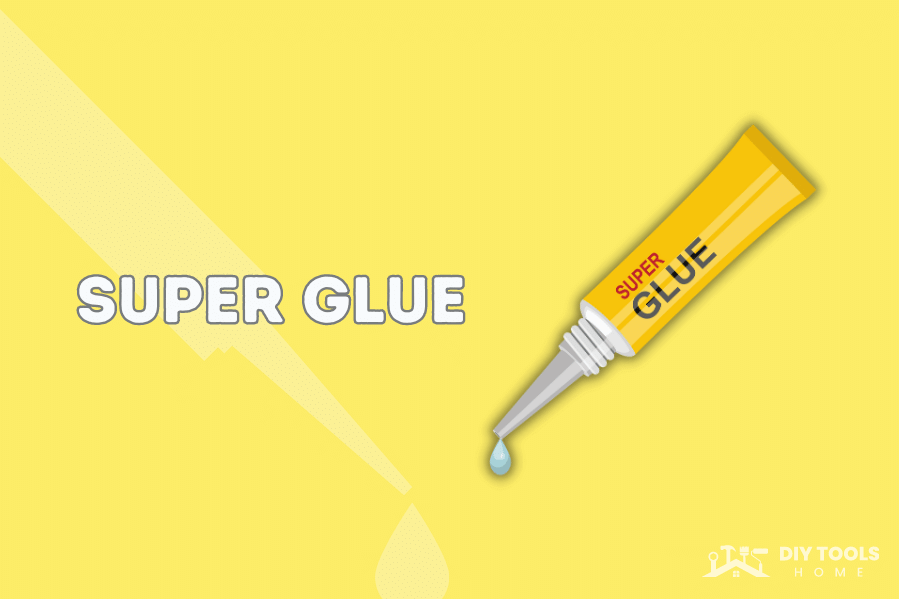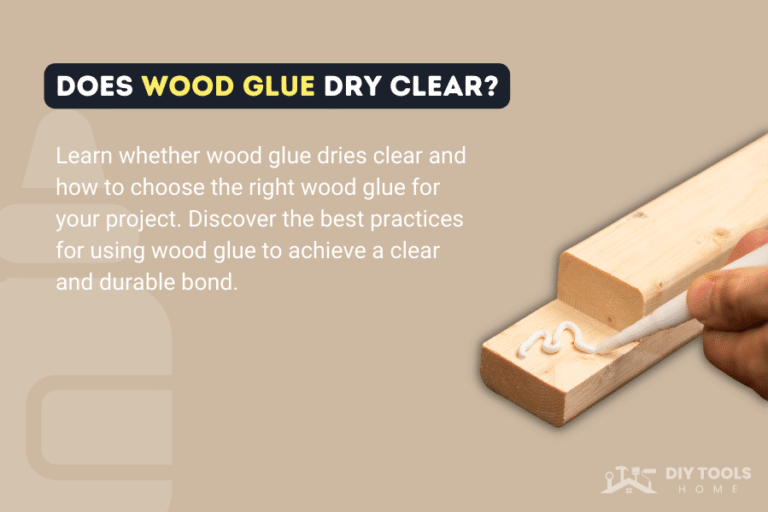Wood Glue Vs Super Glue: Which is Better?

As a wood maker, I know it is among the critical decisions you’ll have to make when choosing a suitable adhesive. Two of the most common types of adhesives you’ll come across are wood glue and super glue. Both have unique properties and advantages, but which is better for your project?
Wood glue is a staple when it comes to woodworking and carpentry projects. Its solid adhesive properties make it perfect for bonding and ensuring a sturdy and durable final product. Super glue is also a fast-drying adhesive made up of cyanoacrylate monomers. It is ideal for bonding non-porous materials like metal, plastic, and ceramics.
In this article, I will compare both glue types: their strength, flexibility, water resistance price, etc. You will also get to know ideal application scenarios for your woodworking projects.
Table of Contents
Wood Glue

Wood glue is a type of adhesive designed explicitly for woodworking projects. It is composed of synthetic resins, water, and other additives. There are several types of wood glue, including polyvinyl acetate (PVA), polyurethane, and hide glue. Wood glue is excellent for repairing or building furniture, as well as for various other woodworking projects.
1. Benefits of Using Wood Glue
Wood glue is a popular adhesive in the market with many advantages. Some are given below.
2. Limitations of Using Wood Glue
One of the downsides of using wood glue is that it can be messy and difficult to clean up. Wood glue also requires clamping during drying, which can be inconvenient if you need the right tools. Finally, wood glue may not work well with non-porous materials like metal or plastic.
Super Glue

Super glue, also known as cyanoacrylate, is a fast-drying adhesive suitable for various materials. It comprises cyanoacrylate monomers, which bond quickly when exposed to moisture. This glue is available in different formulations and types, such as cyanoacrylate and epoxy, each with unique properties and uses.
1. Benefits of Using Super Glue
Like wood glue, super glue also makes a solid and durable bond. Here are some benefits of using super glue.
2. Limitations of Using Super Glue
Super glue is an excellent choice for many projects but not ideal for woodworking projects. It has a limited time for adjustments before it sets ultimately. So, it can be brittle and break under stress. Additionally, super glue can cause skin irritation, so it is essential to use it carefully.
Wood Glue Vs Super Glue: A Comparison Guide

Wood glue and super glue are popular glue types used for DIY projects. They are made of durable bonds and are easy to use. However, if you are on a budget and trying to decide between purchasing one. It’s essential to consider some key factors that can guide you towards making the right choice.
1. Bond Strength
Both wood glue and super glue create strong bonds, but they work in different ways. Wood glue creates a stronger bond with wood than super glue. It penetrates the pores of the wood and creates a chemical bond that is hard to break. In contrast, superglue creates a mechanical bond that holds the surfaces together. You can use super glue to create a strong bond for most DIY projects.
2. Colour After Drying
Wood glue and super glue can have different colours after they dry. Wood glue usually dries to a yellow or amber, which can be great when working with natural wood surfaces that need staining or finishing. On the other hand, super glue dries to a clear or see-through colour, which is suitable for projects when you need a clear finish.
Some types of wood glue come in waterproof or stainable options that may change the colour of the bond line. Also, some superglue might be coloured or have a tinted formula that can change the final look.
3. Flexibility
Wood glue is more flexible than superglue. The reason is that wood glue is made to handle the natural expansion and movement of wood due to changes in humidity and temperature. It allows the bond to move and bend without breaking, which is essential if you want it to last a long time.
In contrast, wood glue is stiffer and more flexible than super glue. There may be better options than this if you’re bonding materials that need to move or flex all the time, such as rubber or some plastics. But some types of superglues are made to be more flexible than others. These are usually called “flexible” or “rubber toughened” and are made to handle some movement and flexibility in the bond line.
4. Setting time
Superglue and wood glue have different setting times. Superglue sets very quickly, usually within a few seconds. It means that you have to be careful when using it. You only have a little time to adjust or reposition the parts you’re bonding. It can be great for small projects or quick repairs you need to finish quickly.
On the other hand, wood glue takes much longer to dry and set than super glue. It can take several minutes or even hours, depending on the type of wood glue and the environment. Do you know how long different types of wood glue take to dry? This longer working time gives you more time to adjust and reposition the parts before the glue sets. It is essential for larger or more complex projects where you must take time to get everything right.
5. Water Resistance
Super glue is a strong adhesive that can bond many different materials quickly and easily. However, it’s not inherently water-resistant, so there may be better choices for projects exposed to water or moisture over time. So if you use super glue to fix something like a broken vase or a ceramic mug, it might come apart again if it gets wet.
On the other hand, wood glue is specifically designed for woodworking projects and is often formulated to be water-resistant or even waterproof. It makes it an excellent choice for projects exposed to moisture, such as outdoor furniture or boats! Wood glue can bond wood well and help prevent it from swelling or warping due to water exposure.
6. Price Point
Wood glue is generally more affordable than superglue. The price of wood glue can vary depending on the type of glue and the brand, but it is generally less expensive than super glue. Super glue is more costly than wood glue. The price of superglue can vary depending on the type of glue and the brand, but it is generally more expensive than wood glue.
7. Clean Up
When you finish your project, cleaning up is our next step. But some glues take a lot of effort to clean. Both wood and super glue come out messy and need to be cleaned up. You can use sandpaper and a damp cloth to remove glue from the wood.
8. Project type
Super glue has many everyday uses, such as repairing accessories, working with minor car issues, and bonding delicate electronic parts. Ensure you avoid using super glue on flexible, heavy, or very porous surfaces as it may be absorbed into the material, giving less adhesion. It has a brittle texture and cannot withstand heavy weight and pressure; that’s why you’d want to limit it to use on smaller projects.
Wood glue, which is best suited to wood, may not be versatile as superglue, but you can use it for heavy-duty projects and porous materials since it can withstand stress better than super glue.
When to Use Super Glue & Wood Glue? Ideal Applications
Super glue and wood glue are versatile adhesives that can be used for various purposes. Let’s look at some of the most common uses for each:
When to Use Super Glue
When to Use Wood Glue
Conclusion
Choosing between super and wood glue can be tricky; let me break it down. If you’re fixing something made of non-porous materials like metal or plastic, and you need it fixed fast, then super glue is the way to go. It dries quickly and creates a strong bond. On the other hand, wood glue is the better choice if you’re working with wood and need a bond that will last for a long time. Just clamp the pieces together while the glue dries and wipe off any excess glue that squeezes out.
If you want to know more about wood glue, we recommend checking out our informative articles: “How Much Weight Can Wood Glue Hold?” and “How to Use Wood Glue?
Happy crafting!
FAQs
1. Is super glue or wood glue better for metal bonding?
Super glue is better for bonding non-porous materials like metal. In comparison, wood glue is designed for woodworking projects and may not work well with metal.
2. Does Super Glue Bond Oily Surfaces?
Yes, superglue can bond oily surfaces due to its ability to dissolve oil, but it might weaken the adhesion, so cleaning the surface is always recommended before applying.
3. Can Super Glue Work on Painted Wood?
Yes, you can apply super glue on painted wood, but it’s recommended to sand or scrap the wood properly for a better bond.
4. Which is more water-resistant: wood glue or super glue?
Most types of wood glue are water-resistant, while superglue is not water-resistant and will break down when exposed to moisture.






